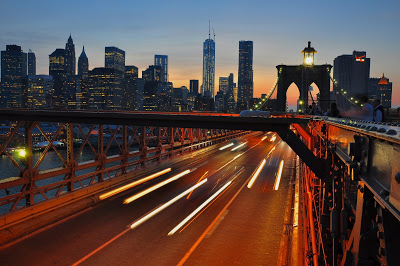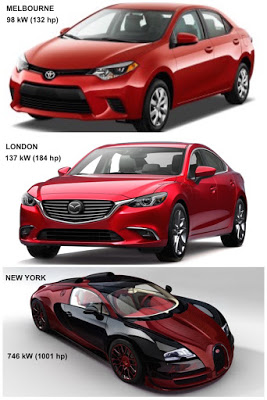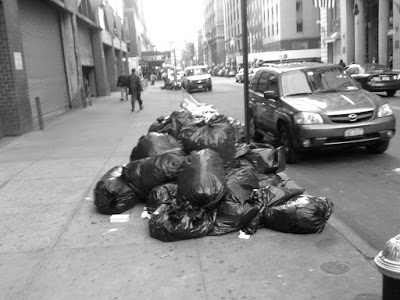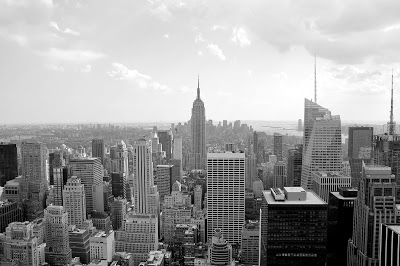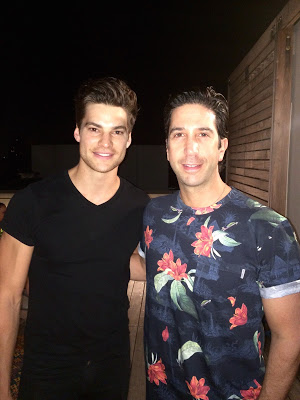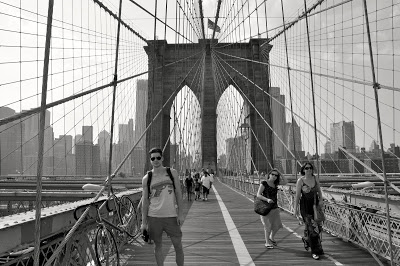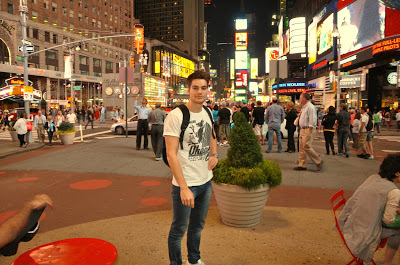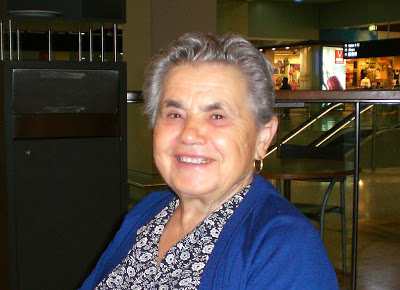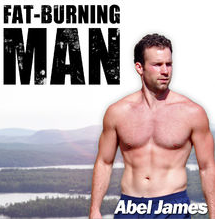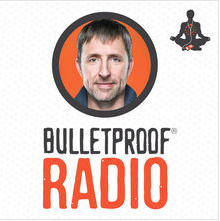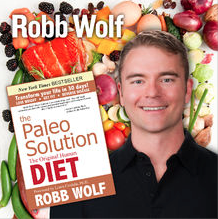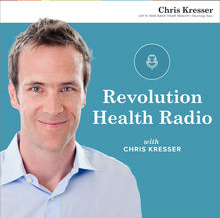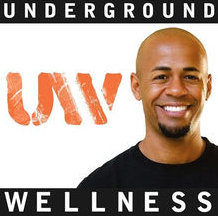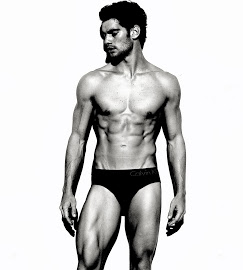I’ve been a bad boy.
I’ve been partying too much and writing too little. Too many late nights and too few early mornings. These past few months I’ve seen more dj’s than yogis, drank more beer than Kombucha and had more 4am finishes than I would like to admit...
I’m sorry for neglecting you, dear reader. It’s been a crazy few months - my last summer in New York.
My fiancé Stacey and I just booked our one-way flight home to Melbourne, where we will be getting married early next year and starting a new life. I’m excited. I might even quit modeling and get a “real” job. I might have to change my blog to 'The Paleo Real Estate Agent'.
While I am excited about moving home to the fifth-time-running ‘Most Livable City’ in the world, I do have mixed emotions.
I love New York.
I don’t believe in love at first sight but I did fall in love with New York very early on in our first encounter. That was back in early 2007. I was a green 21-year-old model with less than $2500 in the bank and a crappy ski jacket I’d borrowed from a friend that was excruciatingly inadequate for the February chill blasting down the great avenues.
My first week in NYC in 2007
That first three month trip to New York was truly eye-opening for me. I arrived clueless, naive, curious, without one single friend, staying in the biggest shit-hole dump you’ve ever seen in South Bronx. Yet within a couple of days I was on my feet, having a blast and relishing in the amazing buzz of the city.
In many ways it was the best three months of my life - a real turning point in my life. New York was the catalyst for all my future travels and the start of my self-discovery. I left knowing that some day I would return here to live.
In many ways it was the best three months of my life - a real turning point in my life. New York was the catalyst for all my future travels and the start of my self-discovery. I left knowing that some day I would return here to live.
It is incredibly seductive this city. It sucks you in. You get swept up in the sheer energy of the place. The wattage per square mile is incomparable to any city I've been to.
If Melbourne were a Toyota Corolla and London were a Mazda 6, New York is a Bugatti Veyron. The place is nuts. It’s the best and worst of the Western world, concentrated into a tiny island, and flooded with too many people and too much money and limitless opportunities and temptations.
If Melbourne were a Toyota Corolla and London were a Mazda 6, New York is a Bugatti Veyron. The place is nuts. It’s the best and worst of the Western world, concentrated into a tiny island, and flooded with too many people and too much money and limitless opportunities and temptations.
I do love it. But like any truly loving relationship you have to take the ups with the downs.
New York sucks sometimes. In fact it sucks often, but usually only for an instant. Then it is amazing again. It goes like this most days. New York I love you. New York I hate you.
It’s freezing cold and boiling hot. It’s dirty. It smells like crap, especially in the oppressive humid summer heat - concrete streets piled high with bags of leaking trash.
It’s hard to walk 50 yards without stepping over or around either a brown puddle of frozen, cigarette-butt-peppered sludge (winter), a strewn patch of spilled garbage (summer), or a desperate homeless person or legless veteran (year-round).
"Greatest city in the world."
"Greatest city in the world."
Everything is an effort here. Every trip to Trader Joe’s (grocery store) feels like there is an impending hurricane with people scrambling over one another for the last can of coconut cream and lines snaking 75 yards back to the entrance. And that’s just a typical Tuesday afternoon. It’s hard work.
Our apartment is so small I can simultaneous touch three walls of our bedroom without getting out of bed. You couldn’t bathe a Puggle puppy in our bathroom sink, let alone swing a cat!
Yet I still love it here.
While the intensity and density can drain you at times, I find it elevating for the most part.
New York is a double-edged sword: The incredible buzz facilitates your hustle. Then sometimes the incredible hustle kills your buzz.
But even when New York gets too much a few days away and you’re gagging to get back to her.
A wave of warming satisfaction floods my body driving back towards the city after a weekend upstate - right at the point when cresting the last big hill in Jersey and that iconic skyline rises up from nowhere. It’s magical.
New York, New York... So nice they named it twice.
Yet it’s been a struggle here. For the first time in a long time I have not been making a living from modeling. I have had to step back to hospitality to supplement my income - bartending private events for the rich. It’s not a bad gig to be fair. Very good money for the hours and often fun.
I’ve worked parties for David Schwimmer and Dolce and Gabanna. I’ve poured shots for Paris Hilton in an $80 million dollar townhouse on the Upper East Side and opened $3000 bottles of Bordeaux in a billionaire’s residence in Greenwich. I’ve seen some pretty cool stuff and heard some very interesting conversations.
Me and Domenico Dolce at his Christmas Party
Me and David Schwimmer at his house party
But it’s taken a toll on my lifestyle.
I’ve been drinking far too much. There is too much temptation in this city. Every night is a good night to go out. Every friend that visits from Australia is another excuse to go out. Every weekend means another two or three events to attend.
I did nine weeks here with zero booze in 2013. I had zero social life for those nine weeks. I went out a bit, drinking soda water and leaving before midnight but I didn’t particularly enjoy that. I preferred staying in by myself and ignoring all the social pleas from friends. It was unsustainable.
On the flip side, drinking several nights a week is also unsustainable. I’ve felt the least healthy I have been in many years. My workouts have suffered and my diet, while still pretty good, is not as good as it has been or could be.
Part of the reason I haven’t been writing much these past six months is because I didn’t want to be a hypocrite. I didn’t want to tell people how to live a healthy lifestyle while I am not living one myself.
And I thought you might like to hear about all this... my confession.
Those of you who know me understand that I’m far from perfect. I’ve always liked to party. But those of you who don’t know me might wrongly assume I’m the picture of perfect health - always 100 percent Paleo and working out out like a madman.
Those of you who know me understand that I’m far from perfect. I’ve always liked to party. But those of you who don’t know me might wrongly assume I’m the picture of perfect health - always 100 percent Paleo and working out out like a madman.
Well I am not. I am very human. I eat ice cream. I drink beer. I sleep in. I pass on workouts if I’m tired or hungover. Not all the time, but sometimes.
The good news is that I’ve realized that I don’t have to be perfect. In fact, perfection is a terrible goal. The pursuit of perfection almost always guarantees failure.
Remember that adage I often repeat? Don’t let perfection get in the way of improvement.
You don’t have to be perfect. I don’t have to be perfect. But we can’t let our circumstances get in the way of trying our best to make the right choices most of the time.
In my next article I’m planning to delve into this very topic: how to manage when circumstances are less than ideal; how to mitigate some of the damage when you’re being bad; what isn’t worth compromising on and what is.
I’ll explain how I’ve dealt with my less-than-ideal lifestyle of working late, drinking too much, eating out, partying and coping with the New York hustle while maintaining at least a baseline of condition and not throwing it all away.
Let me emphasize the fact that what I have been doing is unhealthy. Excessive alcohol consumption is bad for your health. Going to bed at 4am is bad for your health. I am not trying to excuse this behavior. I am also not going to tell you that you can maintain this kind of lifestyle forever without long-term consequences.
But I am telling you that if your current circumstance are not perfect you can still do your best to mitigate the damage. I believe you can work nightshifts and still maintain your mood and libido. I believe you can drink alcohol and still maintain your six-pack and max deadlift. It is not ideal, but it is possible, at least in the short to medium term.
I can’t wait to move back to Melbourne, live by the beach, get up early, focus on training, eat well and spend quality time with my family and friends. Yet I am going to miss New York, dearly. And even though my lifestyle of late has been anything but healthy, I’ve had an absolute blast.
I've been driving the Bugatti Veyron, hard. And I love it. It's crazy and exciting and fun. But I've discovered that I'm not the type of person who can drive a Veyron slowly and sensibly. It's time to hand the keys over before I crash. I would be far safer and a much better driver in a Corolla.
I've been driving the Bugatti Veyron, hard. And I love it. It's crazy and exciting and fun. But I've discovered that I'm not the type of person who can drive a Veyron slowly and sensibly. It's time to hand the keys over before I crash. I would be far safer and a much better driver in a Corolla.
I’ve been a bad boy. But hopefully I’ve learned some good life lessons. Circumstances won’t always be perfect - and neither will I be. But one can always get back on the path to improvement.
The Paleo Model.
---
PS - Hope you enjoyed the post! You can follow me on Facebook to find my latest posts and share them with your mates.
An apology: Melbourne, I am sorry. You are not a Corolla. That was for dramatic literary purposes only. You are at least a BMW 328i like I had in LA. Loved that car.
Some old pics from my travels:
The Paleo Model.
---
PS - Hope you enjoyed the post! You can follow me on Facebook to find my latest posts and share them with your mates.
An apology: Melbourne, I am sorry. You are not a Corolla. That was for dramatic literary purposes only. You are at least a BMW 328i like I had in LA. Loved that car.
Some old pics from my travels:
Backstage for a show in 2007
Riding round on my fixie in 2010
Times Square
View of Central Park from the Top of the Rock
My 'Animal Onesie Pub Crawl' 30th Birthday Party
Shooting with budding Supermodel Nina Agdal with the iconic
Empire State Building in the backdrop
I loved that car. West Hollywood, 2011.
